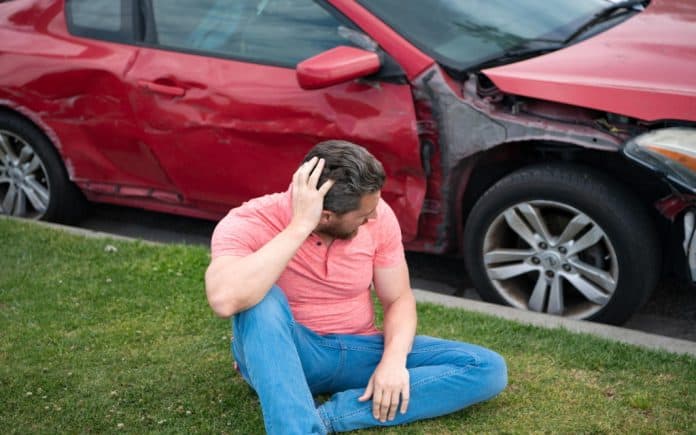Car accidents can cause severe injuries that result in lifelong medical expenses and lost wages. Victims of car accidents can file personal injury claims to recover compensation for their damages. However, proving fault in personal injury claims arising from car accidents can be challenging. This blog post analyzes the legal challenges of proving fault in personal injury claims arising from car accidents and provides strategies to overcome these challenges.
Understanding Personal Injury Claims Arising from Car Accidents
Definition of Personal Injury Claims Arising from Car Accidents
Personal injury claims arising from car accidents are legal actions that injured individuals take against those responsible for their injuries. The individuals responsible for the injuries are usually drivers, car manufacturers, or government entities. Personal injury claims arising from car accidents seek to recover compensation for the victim’s damages, such as medical expenses, lost wages, and pain and suffering.
Common Causes of Car Accidents Leading to Personal Injury Claims
Car accidents can occur due to a variety of reasons. Some of the most common causes of car accidents leading to personal injury claims are:
- Distracted driving: Using cell phones, eating, and drinking while driving can cause distractions that lead to car accidents.
- Speeding: Excessive speed reduces reaction times and makes it difficult to avoid collisions.
- Drunk driving: Driving under the influence of alcohol or drugs impairs judgment and slows reflexes.
- Reckless driving: Behaviors such as tailgating, swerving, and sudden lane changes increase the risk of car accidents.
- Defective vehicles: Defective brakes, tires, and other car parts can cause accidents.
- Proving Fault in Personal Injury Claims Arising from Car Accidents
Burden of Proof in Personal Injury Claims
In personal injury claims arising from car accidents, the burden of proof lies with the plaintiff, i.e., the injured individual. The plaintiff must prove that the defendant was responsible for the accident that caused the injuries. To meet the burden of proof, the plaintiff must provide convincing evidence that shows the defendant was negligent, reckless, or intentionally caused the accident.
Evidence Required to Prove Fault in Personal Injury Claims
To prove fault in personal injury claims arising from car accidents, plaintiffs must provide evidence that demonstrates the defendant’s negligence or recklessness. Some of the evidence that plaintiffs can use to prove fault include:
- Eyewitness testimony: Witnesses to the accident can provide crucial evidence to prove fault.
- Police reports: Police officers who responded to the accident can provide objective evidence of what happened.
- Medical records: Medical records can demonstrate the extent of the plaintiff’s injuries and connect them to the accident.
- Expert testimony: Experts such as accident reconstruction specialists can provide testimony regarding how the accident occurred and who was at fault.
- Photographs and videos: Visual evidence such as photographs and videos of the accident scene can help establish fault.
Challenges in Proving Fault in Personal Injury Claims Arising from Car Accidents
Lack of Evidence
One of the significant challenges in proving fault in personal injury claims arising from car accidents is a lack of evidence. In some cases, there may be no witnesses to the accident, or the available evidence may be insufficient to prove fault. Lack of evidence can make it challenging for plaintiffs to establish fault and recover compensation for their injuries.
Contributory Negligence
Contributory negligence is another challenge that plaintiffs face in personal injury claims arising from car accidents. Contributory negligence occurs when the plaintiff’s actions contribute to the accident that caused their injuries. In states that follow the doctrine of contributory negligence, if the plaintiff is even partially responsible for the accident, they cannot recover compensation for their damages.
Strategies to Overcome Challenges in Proving Fault in Personal Injury Claims Arising from Car Accidents
Gathering Sufficient Evidence
To overcome the challenge of a lack of evidence, plaintiffs must gather as much evidence as possible to prove fault. Plaintiffs should collect photographs and videos of the accident scene, obtain police reports, and interview witnesses to the accident. Plaintiffs can also hire accident reconstruction specialists and other experts to provide testimony regarding how the accident occurred and who was at fault.
Building a Strong Case
To overcome the challenge of contributory negligence, plaintiffs must build a strong case that demonstrates the defendant’s liability. Plaintiffs can argue that the defendant had a duty of care to operate their vehicle safely, breached that duty of care, and caused the plaintiff’s injuries. Plaintiffs can also argue that the defendant’s actions were reckless or intentional, which would eliminate any contributory negligence on the plaintiff’s part.
Proving fault in personal injury claims arising from car accidents can be a challenging legal process. Plaintiffs must meet the burden of proof and provide convincing evidence that shows the defendant was responsible for the accident that caused their injuries. Lack of evidence and contributory negligence are common challenges that plaintiffs face in these types of cases. However, by gathering sufficient evidence and building a strong case, plaintiffs can overcome these challenges and recover compensation for their damages.
If you have been injured in a car accident and are struggling to prove fault, contact Harris Keenan Goldfarb, a car accident lawyer. Our experienced attorneys can help you navigate the legal process and fight for the compensation you deserve. Don’t let the challenges of proving fault discourage you from pursuing your legal rights.



